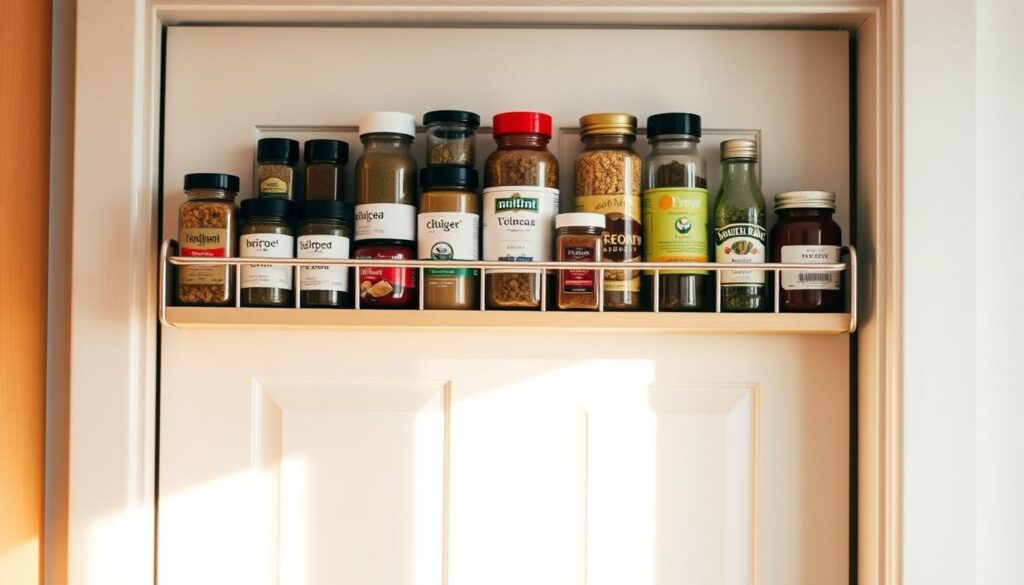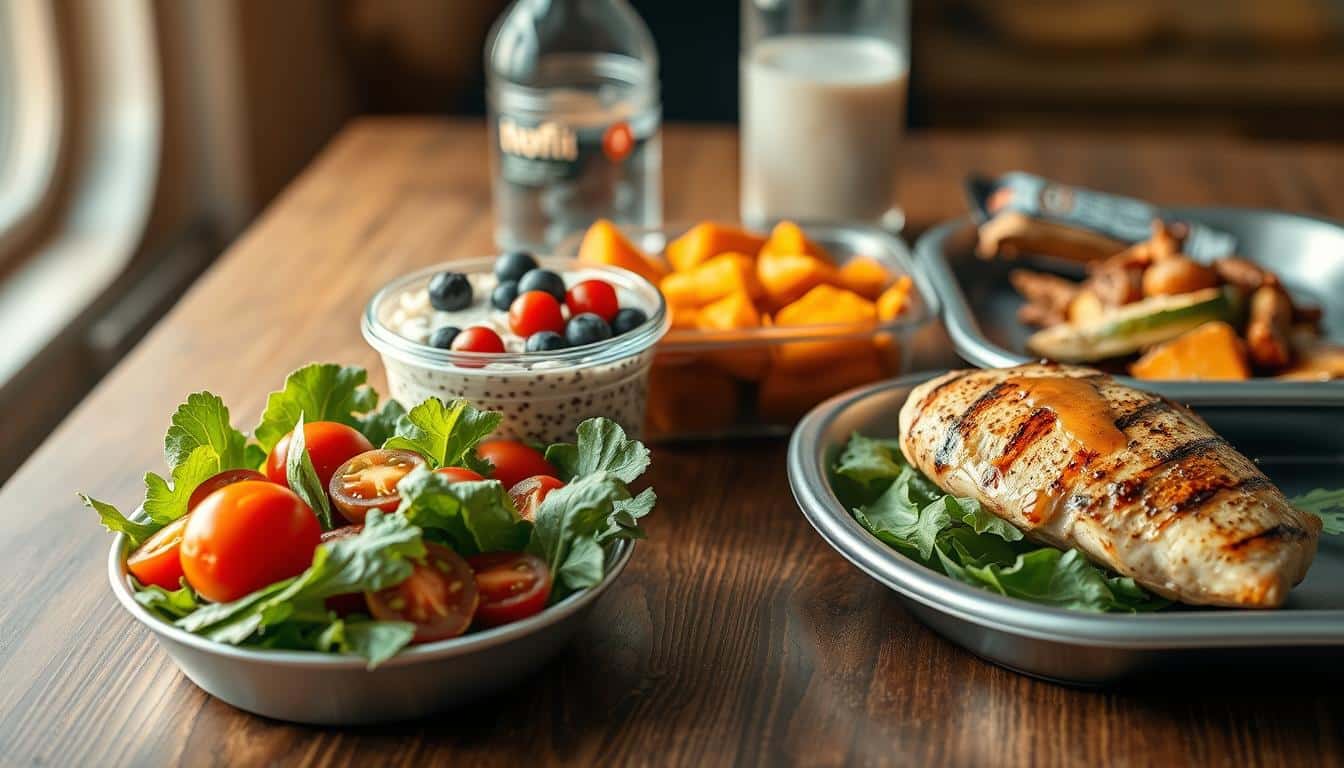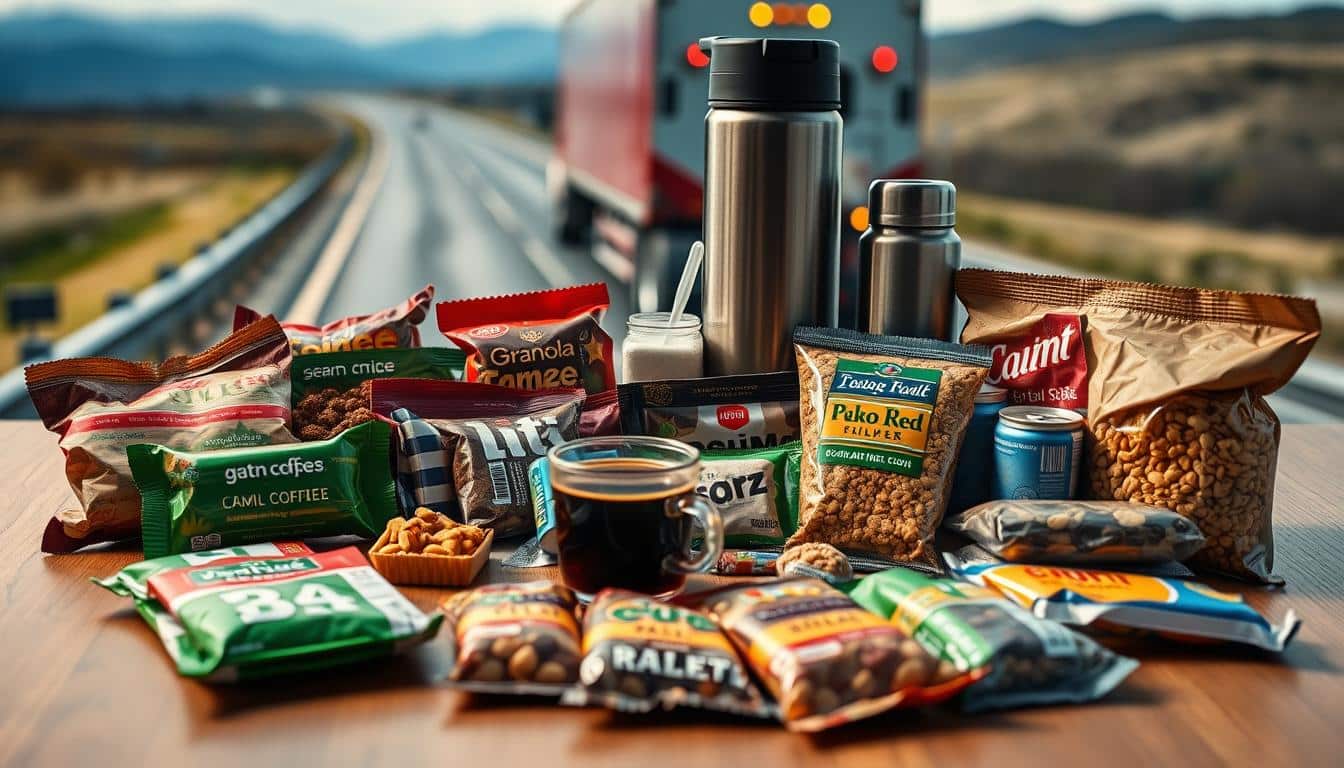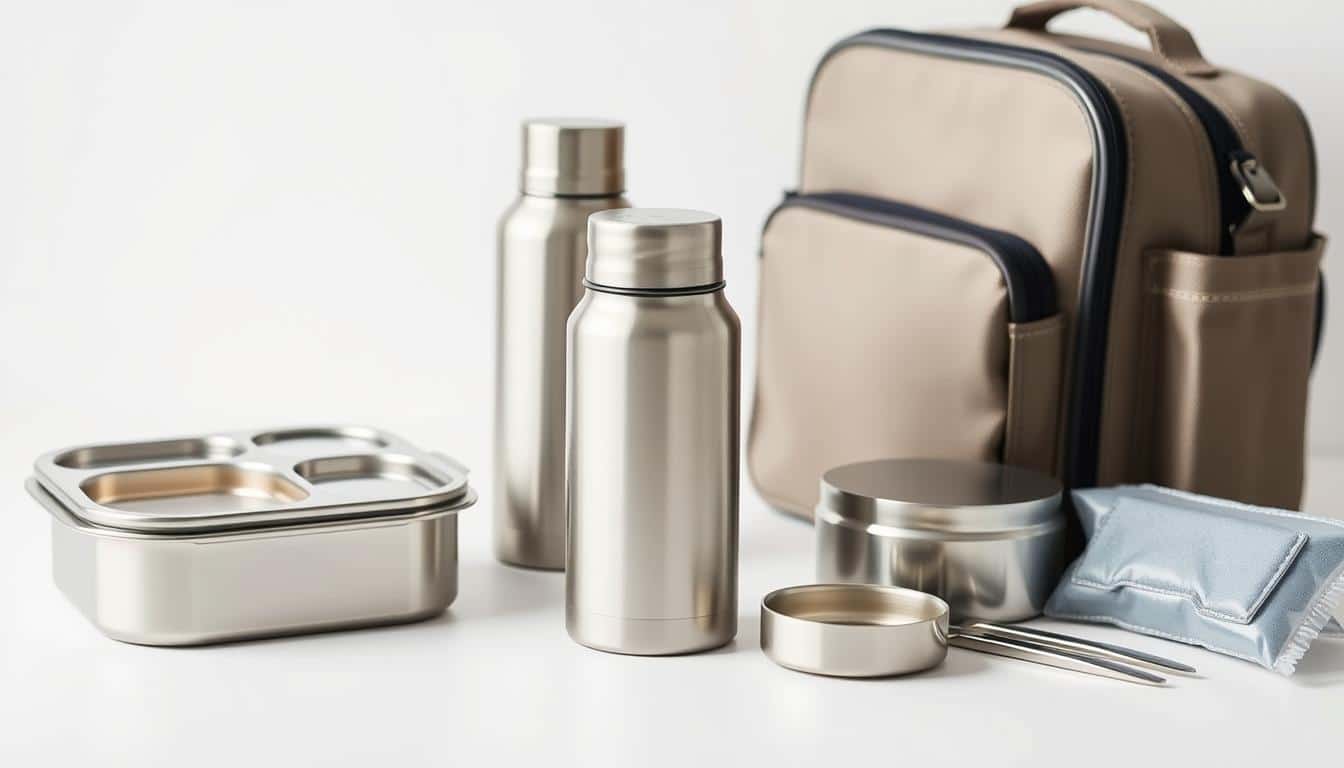Many U.S. homes have small kitchens that quickly get packed with stuff. Having the right food storage solutions can make everything look neat and give you more space. Leslie Lehr, Ben Soreff from House to Home Organizing, and Darla DeMorrow of HeartWork Organizing suggest: clean up, use walls and doors, and keep lids separate from containers.
It’s important to use every little space. The backs of doors, spaces under the sink, and narrow spots between cabinets are great for storage. Adding hooks, thin pull-outs, and baskets can greatly improve your kitchen without costing a lot.
In this article, we cover easy and affordable ways to organize your food containers and maximize kitchen space. Keep reading for advice from experts on how to free up countertop space, keep your pantry organized, and make a small kitchen more roomy and functional.
Assessing Your Small Kitchen: Take Inventory and Declutter
Before starting, make a plan. Taking stock of your kitchen helps you see what you have and need. First, take everything out of your cabinets and pantry. Then, sort items by type and check their expiration dates. This helps you get rid of what you don’t need and find wasted space.
Tackle one cabinet at a time for a quick, easy process. Sort your kitchen goods like pots, pans, and utensils into different groups. Throw away any outdated food or broken tools. Also, find a new place for cookbooks and other non-kitchen items.
Next, decide what to keep, donate, or throw away. Make separate piles for stuff you use often, items to give away, and things to toss. If you haven’t used something in a year, consider donating it.
Experts from The Container Store and professional organizers suggest keeping everyday items close. Move things you rarely use to harder-to-reach spots. This makes room for the things you use all the time.
- Empty a cabinet or pantry before sorting things.
- Organize items by their use to find extras easily.
- Get rid of any containers that are damaged or have changed color.
- Plan a time to take things you’re donating to keep your kitchen tidy.
Look for new storage spots after decluttering, like the backs of cabinets. Use these places only if you’ve already trimmed down your main storage areas. A more focused kitchen setup makes it easier to organize later and leaves space for new items.
Last, mark areas for daily use, like cooking and storing food. Doing this makes it easy to find and keep track of your kitchen essentials. It also helps keep your space neat and efficient in the long run.
Compact food storage: Principles for Maximizing Limited Space
Small kitchens need simple rules to keep things neat and reachable. Using compact storage tips helps use every bit of space. These tips help in keeping things orderly by minimizing bulk, utilizing unoccupied areas, and grouping similar items. This makes cooking easy and quick.
Why breaking container pairs makes storage more compact
Keep bases and lids separate to lessen space taken. Nesting containers deletes unused space and makes stacks steadier. Store lids in an easy-to-see spot. This avoids messy piles and makes finding them quicker.
Use vertical space and wall-mounted solutions
- Install slim shelves or spice racks on walls to make more space on counters and cabinets.
- Put up pegboards for utensils and small pans; they can be reorganized as needed.
- Use racks on the back of doors for cutting boards and trays to use space wisely.
Designate zones and limit categories to avoid overflow
Set clear areas in your kitchen for different tasks like baking and cleaning. Keep only a few types of items in each area so it stays organized. Always check for expired items and remove them. This keeps your kitchen tidy and prevents buying things you already have.
Use these strategies—organize containers, make the most of vertical space, and create specific kitchen areas. Small changes like adding racks or baskets make a big difference. They save you time each day and reduce clutter.
Smart Cabinet Solutions: Pull-Outs, Tilt-Down Drawers, and Custom Racks
Small kitchens can be smart with the right cabinet upgrades. Pull-outs and wire racks make all items easily visible. A tilt-down sink drawer uses empty space for sponges and cleaners. Custom racks organize cabinets to match your daily needs.
- Full-extension pull-outs make the most of deep cabinets, letting you reach everything.
- Wire or mesh pull-out racks promote airflow, perfect for canned goods and vegetables.
- Pull-out drawers transform narrow cabinets into multi-level storage, saving space.
Tilt-down sink drawer uses
- Under the counter, a tilt-down drawer keeps sponges and cleaners out of sight.
- It helps clear countertops and makes essentials easy to grab.
- This handy feature is great for small unused spaces.
Modifying cabinets into customizable pantry spaces
- Start by measuring the cabinet depth, height, and door swing area.
- Pick adjustable racks and trays for flexible storage height and use.
- You might install these yourself or hire a pro, especially for heavy items.
For better use of space, mix solutions in your kitchen cabinets. Implement pull-out drawers, a tilt-down drawer, and rack divisions. This approach decreases search times, tackles clutter, and makes small kitchens seem bigger.
Door and Back-of-Door Storage Ideas for Small Spaces
Doors offer hidden storage in small kitchens. Smart choices free up shelf space and keep things handy. Check door swings and nearby items to ensure nothing blocks your way.

- Choose a slim over-the-door spice rack to avoid clashing with pantry shelves.
- Label jars clearly to spot them easily.
- Place heavier bottles at the bottom for stability and safety.
Hanging mitts, cleaning supplies, and small tools on cabinet backs
- Oven mitts, dishcloths, and spray bottles fit well on cabinet doors.
- Use adhesive hooks for drywall doors and screw-in hooks for wood doors.
- Keep similar items together for easy access during cooking.
How to measure and choose the right over-the-door products
- Measure your door’s height, width, hinge clearance, and thickness.
- Compare your measurements with product details online or in stores.
- Pick organizers for the weight you need and check the door’s function post-install.
Take key measurements and think about what you’ll store. For kitchen tools, consider their handle lengths. This ensures they won’t block drawers or appliances.
Try mixing options: a narrow spice rack and a few hooks for aprons and light tools. This approach increases functionality without cluttering the space or jamming doors.
Drawer Organization Strategies to Save Counter Space
Having a neat drawer setup leaves more room on your counters. It also makes cooking faster. Assign each drawer a specific role. This will help you find things quickly and avoid clutter on your countertops.
Using utensil trays and drawer dividers to create limits
Utensil trays organize your silverware and small tools perfectly. Put a tray in your top drawer for everyday utensils. Pair it with dividers to mark spaces for gadgets, measuring spoons, and other small items. This setup ensures everything finds its way back, keeping surfaces clean.
Storing lids and containers in separate drawers to prevent avalanches
Keep lids and containers apart to stop the all-too-common mess. Use one drawer for lids and another for the bottoms. If you only have big drawers, use a divider or a box inside to keep them separate. Sorting lids by size helps you quickly find the right match.
Design tips for turning shallow drawers into efficient storage
Shallow drawers are great for the tools you use a lot. Add thin dividers for items like spatulas and spoons. Marking each section helps everyone know where things go. Choose dividers you can adjust for tools of different sizes.
- Use a shallow drawer for daily utensils and keep less-used tools in a deeper drawer.
- Mix utensil trays with vertical dividers to store cutting boards and baking sheets upright.
- Place most-used lids near the prep area to speed cooking tasks.
Baskets, Bins, and Open Shelving for Flexible Storage
Small kitchens benefit from adaptable storage systems. Mix kitchen baskets and bins to manage deep cabinets. They also help open shelving setups stay organized. Pick items that fit your routines, making things easy to find and put back.
-
Why baskets fit awkward spaces: Baskets wrap up odd-shaped items and loose packets well. They organize deep cabinets by separating container bottoms from their lids. It turns the space into something like a drawer. This organization helps keep lids and bases together for quick access.
-
Display or function on open shelves: Open shelving works best when you’re picky about what’s displayed. Use visible shelves for everyday items like plates and cups. Add a few decorative jars for looks. Store extras in bins or behind cabinet doors to keep things neat.
-
Choose materials and sizes that move well: Opt for wicker, coated wire, or strong plastic that can handle humidity. Use shallow baskets for high shelves and deeper bins below. Pick sizes that slide out easily. Slide-out baskets are great for tough-to-reach spots.
Label your baskets and bins to know what’s inside at a glance. Stick with one color or style for your open shelves. This helps keep your counters clean and makes daily chores faster.
Wall-Mounted and Hanging Solutions: Pegboards, Hooks, and Knife Blocks
Using vertical space can make a tiny kitchen way more useful. A pegboard lets you hang spices, tools, and small shelves in any way you like. Pick things that won’t rust easily. Also, hang heavy stuff low and light items up high.
Using pegboards to create an adaptable vertical system
Put up a pegboard using strong supports, especially where there aren’t any wall studs. You can hang lots of things on it, like cups, spices, and gadgets you use a lot. You can easily move things around on the pegboard to meet your changing needs.
Installing hooks for pots, pans, and frequently used utensils
Hang your pots and pans on hooks or a pegboard to save space. Make sure there’s enough room between hooks so air can flow and things don’t get too crowded. Choose hooks that won’t rust, especially if your kitchen gets steamy.
Wall-mounted knife blocks and magnetic strips to free up drawers
Putting a magnetic strip over your work area keeps knives within reach and safe. A knife block on the wall does the same, while also protecting the blades. Both choices help save space in your drawers and keep your knives sharp and safe.
- Anchor systems into studs or use rated anchors for safety.
- Mix hanging kitchen storage with open shelving for balance.
- Limit items per hook to avoid overloading and sagging.
Container and Lid Systems: Best Practices for Food Storage Containers
Small kitchens benefit when containers and lids match up well. First, check what you have and toss out any broken items. Pick the sets you use a lot. This helps you set up a smart way to keep your food containers in order and save space.

Separate bottoms and lids
Don’t keep containers and lids together. Nest containers of similar shapes to save space. This keeps your shelves tidy. For replacing sets, going with ones like Pyrex or Rubbermaid Brilliance helps. They’re designed to be easy to nest and stack.
Where to store containers and lids based on usage
Put containers in a place like a drawer or shelf close to where you prepare food. Keep lids in an easy-to-reach spot, like a shallow drawer or labeled basket. This way, you can find what you need quickly. Using pull-out baskets in deep cabinets is great for accessing everything easily.
- Label baskets or drawers “Bases” and “Lids” for quick visual cues.
- Use a small bin inside a larger drawer to store lids if only one deep drawer is available.
- Leave space to add a few new containers without forcing everything together.
Decluttering damaged or rarely used containers before organizing
It’s good to clear out old Tupperware and mismatched sets. Get rid of containers that are warped or stained and lids that don’t seal. If you’re not using them, consider donating to declutter and make more room.
- Sort: match bases to lids, set aside unmatched pieces.
- Decide: keep frequently used sets, recycle or donate the rest.
- Organize: nest container bases and store lids separate in labeled containers for a tidy, efficient system.
Storing Small Appliances and Seasonal Items Off the Counter
Small tools like stand mixers and air fryers take up a lot of counter space. Only keep what you use daily within arm’s reach. Store everything else in a spot that’s clearly marked. This keeps counters ready for cooking and serving.
Create a plan to rotate appliances based on the season. Put heavy or holiday-only items up high or in a closet when not used. Then, bring them back when it’s time for parties or holiday cooking. This cuts down on mess and makes items easier to grab.
- Pick a shelf or a bin for rarely used items.
- Protect your appliances with covers, original boxes, or labeled bins.
- Keep accessories like beaters and lids together in clear bins or bags.
When there’s no room, move large party items and barware to another spot. Keep cleaning items in a utility closet. This saves precious kitchen space for food.
Make storing items off the counter a habit by labeling and organizing by use. Label boxes with what’s inside and its parts. This makes finding things faster and prevents buying things you already have.
Steps to start now:
- Choose which appliances will stay out each week and which to store away.
- Set aside a specific area for storing things and mark it.
- Put accessories in the box with the appliance or in a transparent bin for easy setup.
Pantry Staples and Visibility: Jars, Labels, and Expiration Management
Clear storage makes small pantries seem bigger and helps cut down on wasted food. Using clear canisters and jars lets you see what’s inside quickly. Stacking them saves space and keeps things like cereal and beans in order.
Pick sturdy glass or safe BPA-free containers like those from Anchor Hocking or OXO Good Grips for lasting use. Keep items you use a lot at eye level to make cooking faster. Put things you seldom use on the top shelves to avoid clutter.
Labels help you find things faster and keep track of them. You can use simple stickers, printable labels, or a white marker on glass jars. Always note what’s in the container and when it was opened or its expiration date to avoid mix-ups.
Checking expiration dates should be a regular task. Do a pantry clean-out four times a year to throw away old items and things you have too much of. This will prevent buying duplicates and free up space for things you really need.
- Use uniform pantry jars for stackability and consistent shelf lines.
- Write open-by or expiration dates on labels to track freshness.
- Group similar items together to speed checks and meal planning.
Even small changes can make a big difference. Clear containers and smart labeling habits bring order and reduce stress. Regularly checking expiration dates keeps your pantry up-to-date and your food fresh.
Conclusion
This guide offers practical steps for organizing your kitchen storage. Begin by checking what you have and getting rid of what you don’t need. Make use of vertical space and the backs of doors to keep your counters clear.
Transform cabinets with accessories like pull-out shelves and drawer organizers. Keep your containers and lids tidy by grouping them. Use labels on jars and canisters to track what you have and when it expires.
Don’t waste any space. Utilize the inside of cabinet doors and walls to keep things off the counters. Keep tools you use every day within easy reach. Choose storage solutions that fit your needs and space.
Here’s a simple checklist: Clear out clutter and organize, use space wisely, and keep things labeled. By following these tips, you’ll keep your kitchen organized and make the most of your space.
FAQ
How do I start a complete kitchen inventory and declutter in a small space?
What should I donate, toss, or move out of the kitchen?
Why should I separate container bases and lids and how do I do it?
How can I make the most of vertical space and backs of doors?
What are the benefits of pull-out drawers and racks in small kitchens?
Should I install a tilt-down drawer under the sink?
How do I choose and measure over-the-door spice racks and organizers?
What are practical drawer organization strategies for utensils and lids?
How do baskets and bins help with irregular container sizes and deep cabinets?
When should I use open shelving versus closed cabinets?
How can pegboards, hooks, and magnetic strips free up drawer and cabinet space?
What are best practices for choosing canisters and jars for pantry visibility?
How often should I check expiration dates and audit the pantry?
How should I store small appliances and rotate them to save counter space?
What product choices work best for long-term durability in a humid kitchen?
How can labeling improve consistency and accountability in a household?
Are expensive specialty organizers necessary for compact food storage?
What final steps should I take to maintain a compact kitchen storage system?
Content created with the help of Artificial Intelligence.



